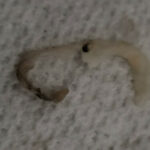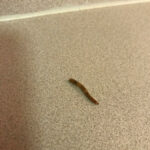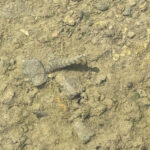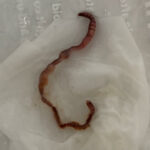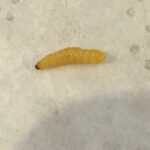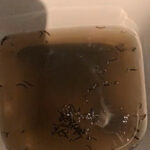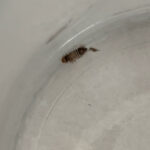If you suspect that your pet has worms and you are desperately trying to identify them, there are a number of reliable websites that publish dog worm photos. You can begin your search by visiting The Dog Chat Forum at www.dogchatforum.com. This site offers a few pictures of dog worms and quite a bit of information about whatthey are and how to treat them. If you would like to search through a wide variety of dog worm photos (all in one palce) try Photo Vault and Pic Search.
San Francisco-based Photo Vault features pictures of worms from A-Z as well as snakes, lizards, medical leeches, fish, and more. The site allows the user to enlarge images and it also offers basic information about each worm. Users cannot use the images without permission. If you are interested in using Photo Vault images, you must use the email function at the bottom of each enlarged photo to make a request, you can use the automated site called “Photovalet,” or you may contact Photo Vault directly by calling 707-775-2562.
Pic Search features more than 2,000 worm images. Users may search through images by entering the type of worm or search page by page. Pic Search has roughly 20 images per page. Each image offers basic information about the worm and/or a link to a website that offers more detailed information about each subject.
If you don’t find what you are looking for at Pic Search, Photovalet or Photo Vault, there are several ways to determine which type of worm your dog might have. You can check for specific symptoms as listed below or you might be able to identify the worm by comparing the way it looks to any of the physical descriptions listed here.
Hookworms, tapeworms, roundworm, whipworm, and heartworm are the most common types of parasitic worms in dogs. Hookworms, tapeworms, roundworms, and whipworms live in the dog’s intestines and heartworm lives in the dog’s heart and in the blood vessels that lead from the heart to the lungs. Round worms look like spaghetti and tapeworm segments look like grains of rice. If left untreated any type of dog worm can be fatal, but the heartworm is the most dangerous of them all.
Fleas are a major source of certain types of worms, such as tapeworms. When a dog accidentally swallows an infected flea, worms can hatch in the dog’s intestines. These types of tapeworms can also be transmitted to humans as well. Animal carcasses such as rodents and rabbits may also contain tapeworms, so be sure to keep your pets away from them at all costs. Parasitic worms can also be contracted from other pet’s feces, which can be easily be found in parks, on pet runs, and even in your own backyard. Whipworm and roundworm eggs can remain infectious for years, and hookworm larvae can multiply in the soil in and around a dog run, park or yard.
One of the most obvious ways to detect dog worms is to simply examine your dog’s feces. This can be accomplished by sight alone. Dog worms can also be found in your dog’s food, on or buried in your dog’s fur, around his anus, around his paws (from scratching) and it is not uncommon to find them in your dog’s ears. Other symptoms of parasitic worms in dogs include:
- Change in your dog’s appetite
- Coughing and hiccupping (due to heartworm)
- Diarrhea
- Distended abdomen in puppies
- Dull coat
- Inability to exercise
- Vomiting
- Weakness
- Weight loss
Fortunately, there are ways to prevent parasitic worms in worms. One of the most important ways to prevent a serious dog worm infection is to have your pet screened for worms twice per year. If your dog is considered high-risk for worms, you should have him screened more than twice a year. High-risk dogs typically live in condensed urban areas and they usually live in a home with more than one pet. Show pets and hunting dogs are also considered high-risk. Caring for a dog with worms should be done only under the care of a vet. Most non-prescription medications don’t work. Your vet will have access to a number of cutting edge preventatives that are extremely effective against the most aggressive types of parasites such as roundworm, whipworm, hookworm, and heartworm.
In addition to preventative measures, it’s also a good idea to keep your dog clean and well groomed. You should also dispose of dog feces immediately. Never leave it in piles around your yard, dog run, etc. If you notice any of the symptoms of dog worms listed above, please contact your vet immediately.
All About Worms is always free, always reader-supported. Your tips via CashApp, Venmo, or Paypal are appreciated! Receipts will come from ISIPP Publishing.



